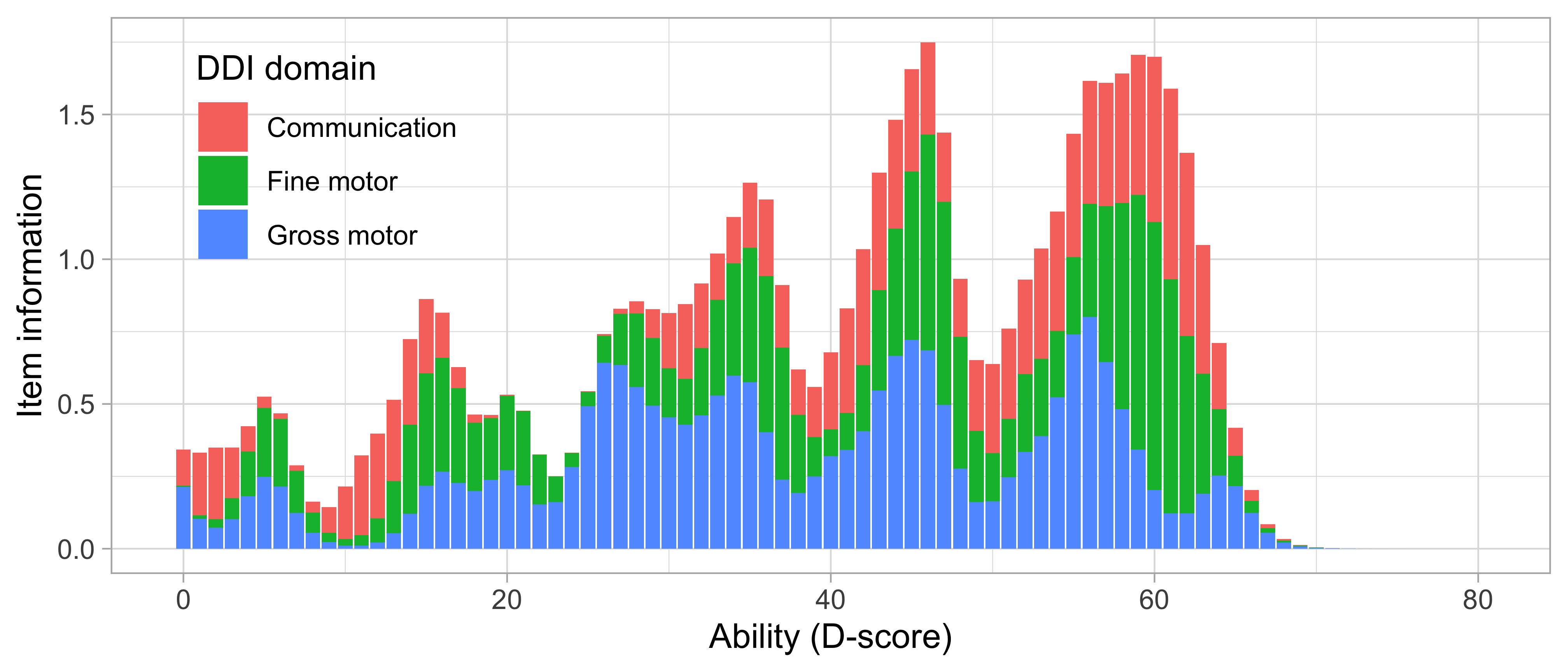7.1 Internal validity
7.1.1 Content validity
Content validity is the extent to which the D-score represents all facets of development. In contrast to “face validity,” which assesses whether the test appears valid to respondents, content validity is about what is measured.
One important form of content validity is that we wish to make sure that the measurement scale represents the various developmental domains in a fair way. In the simplest case, we can assign each milestone uniquely to one domain and evaluate coverage by splitting the cumulative item information.

Figure 7.1: Cumulative item information by DDI domain.
Figure 7.1 shows the coverage of the three domains of the DDI at various levels of the D-score. The three domains of the DDI are relevant at most ability levels. The DDI contains no communication milestones between 20 \(D\) and 30 \(D\), so at these levels, the DDI measures primarily motor performance.
7.1.2 Construct validity
Construct validity is the extent to which the D-score behaves like the theory says the construct should behave. For example, we expect that child development advances with age. Figure 4.3 provides convincing evidence that the D-score increases fastest in the first six months and keeps rising at a slower rate as children age. This phenomenon is consistent with theories in growth and child development.

Figure 7.2: Item fit by D-score for the DDI domains.
In Section 4, we assumed that child development is a latent variable. Figure 7.2 provides one way to evaluate the validity of this assumption. The figure plots the item fit for each milestone coloured by domain. Items from different domains fit equally well, so there is no evidence that the D-score favours a particular area. Put in more technical terms; the DDI domains do not explain differences in the item fit residuals of the model.